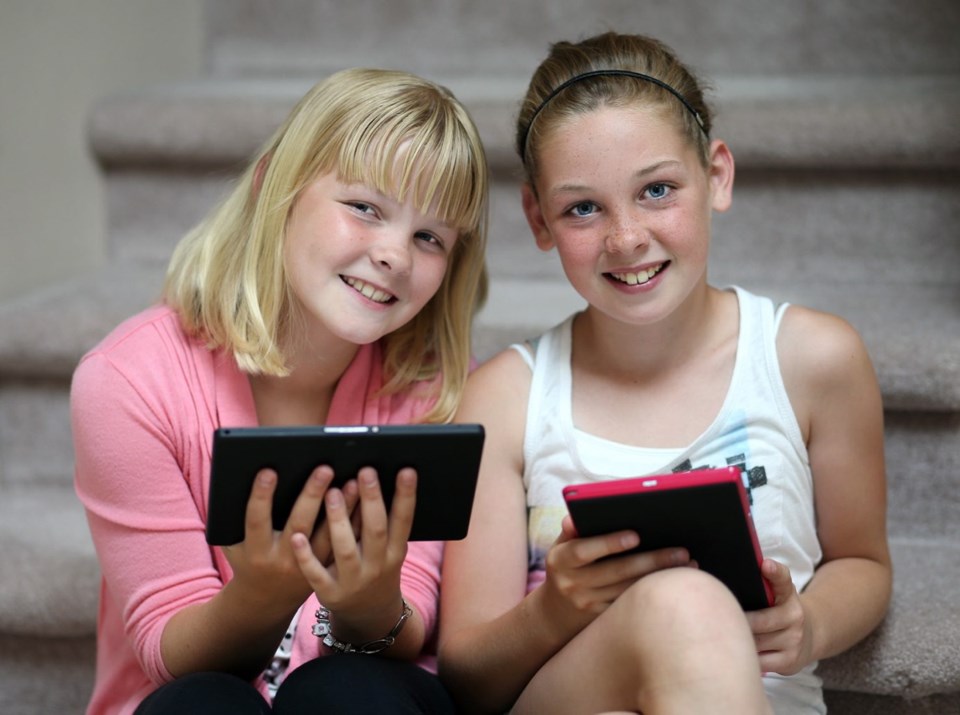When Tracey Rompain reads, she still wants to have a “book in her mitt,” but her two daughters are diving into digital media with gusto.
Faith, 10, and Leann, 11, both have Kobo electronic readers. Faith has a Blackberry PlayBook. Leann has a laptop, cellular phone and iPod.
Both Faith and Leann are also devoted readers, reading several grades above their age level. But they bounce around on their digital devices from reading books for pleasure to doing schoolwork, playing computer games or reading a school-assigned book.
You’d think all that competition for their attention would be distracting, yet they always finish their books and always want more.
“I actually think they are reading more because it’s all so instant,” said Tracey, a financial planner living in Colwood with her family.
“It’s ‘Mum, can I get a book?’ instead of ‘Mum, can you take me to the bookstore?’ ”
That “instant” factor is just one aspect of the new realm of digital literacy under study by University of Victoria assistant professor James Nahachewsky, who works in the faculty of education.
Nahachewsky said young people don’t just want more options — they expect them.
“It’s not just immediacy of the material but also its accessibility,” said Nahachewsky. “There is this expectation that there will be a variety of sources and platforms and perspectives out there.”
His recent research looks at how reading on digital devices such as a Kobo, Kindle or an iPad affects the reading processes of young people.
The research was spurred in part four years ago when they filled a classroom with Sony e-readers, then state-of-the-art devices.
Nahachewsky sat in on Grade 9 and 10 English classes, watching and recording students’ interactions with the devices, then interviewing them afterwards.
He noticed the young people used the devices to personalize their reading experiences. For example, they would adjust the size, style and orientation of the print. But they also wanted to do things like email the author or discuss the material via email with other students. Reading became a social experience that very quickly levelled the playing field in terms of understanding the text.



